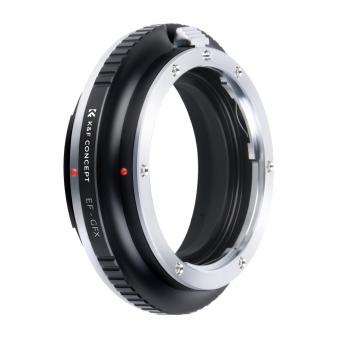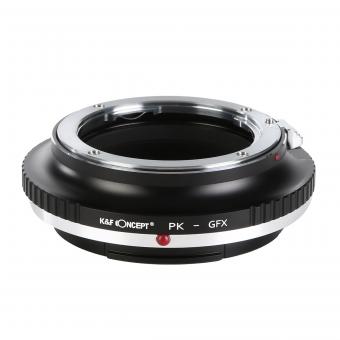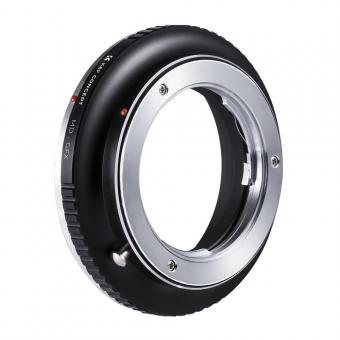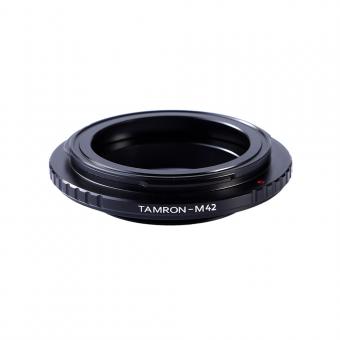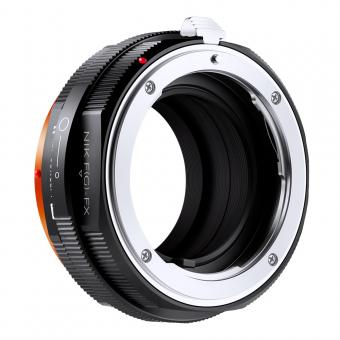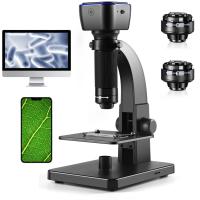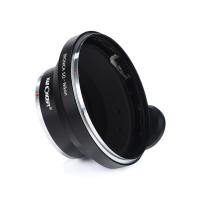Why Inverted Microscope Is Used For Cell Culture ?
An inverted microscope is commonly used for cell culture because of its unique design that allows for observation and manipulation of cells in a culture dish or flask. The inverted configuration means that the objective lens is positioned below the stage, while the light source and condenser are located above. This design provides several advantages for cell culture applications.
Firstly, the inverted microscope allows for easy access to the culture vessel. The objective lens can be positioned closer to the cells, enabling high-resolution imaging and minimizing the need for long working distance objectives. Additionally, the stage is typically equipped with a heated plate and a carbon dioxide (CO2) chamber, which helps maintain optimal temperature and pH conditions for cell growth.
Moreover, the inverted microscope facilitates the manipulation of cells during culture. The open design of the stage allows for the use of micromanipulators, microinjectors, or other tools to perform various procedures, such as cell transfection, microinjection, or cell sorting. This versatility makes the inverted microscope a valuable tool for cell culture research and applications in fields like cell biology, developmental biology, and tissue engineering.
1、 Enhanced visualization of cells in a culture medium.
The inverted microscope is commonly used for cell culture due to its ability to provide enhanced visualization of cells in a culture medium. Unlike a traditional upright microscope, the inverted microscope has its light source and objective lens positioned below the stage, while the specimen is placed on a glass coverslip or a culture dish. This unique design allows for a number of advantages in cell culture applications.
One of the main reasons for using an inverted microscope in cell culture is the ability to observe cells in a more natural and undisturbed environment. The cells can be cultured directly on the bottom of the culture dish or on a coverslip, allowing for easy access and manipulation of the cells during experiments. This setup also enables the use of specialized cell culture techniques such as time-lapse imaging, where the growth and behavior of cells can be monitored over extended periods of time.
Furthermore, the inverted microscope provides a better depth of field compared to an upright microscope. This is particularly important when working with three-dimensional cell cultures or when observing cells in a thick culture medium. The inverted design allows the objective lens to be closer to the cells, resulting in improved resolution and clarity of the images.
In recent years, advancements in inverted microscope technology have further enhanced its utility in cell culture. For example, the development of confocal microscopy and fluorescence imaging techniques has revolutionized the field of cell biology. Inverted microscopes equipped with these technologies allow for the visualization of specific cellular components or processes, such as fluorescently labeled proteins or intracellular calcium dynamics. These techniques have greatly contributed to our understanding of cell behavior and function.
In conclusion, the inverted microscope is used for cell culture due to its ability to provide enhanced visualization of cells in a culture medium. Its unique design allows for easy access and manipulation of cells, improved depth of field, and compatibility with advanced imaging techniques. As cell culture techniques continue to evolve, the inverted microscope will remain an essential tool for studying cellular processes and behavior.

2、 Improved focus and clarity for observing cell morphology.
The inverted microscope is commonly used for cell culture due to its ability to provide improved focus and clarity for observing cell morphology. This type of microscope has a unique design where the objective lens is positioned below the stage, while the light source and condenser are located above the stage. This inverted configuration allows for a number of advantages when it comes to cell culture observations.
One of the main benefits of using an inverted microscope for cell culture is the ability to observe cells in their natural environment. In cell culture, cells are typically grown in a culture dish or flask, and the inverted microscope allows for direct observation of the cells from the bottom of the dish. This eliminates the need to disturb the cells by transferring them to a separate slide, which can alter their behavior and morphology.
Furthermore, the inverted microscope provides a larger working distance between the objective lens and the sample. This is particularly useful when working with thick or three-dimensional cell cultures, as it allows for better focusing and imaging of the cells. The increased working distance also enables the use of specialized cell culture vessels, such as multi-well plates or microfluidic devices, which may not fit under a traditional upright microscope.
In recent years, advancements in inverted microscope technology have further enhanced its capabilities for cell culture applications. For example, the development of confocal and fluorescence microscopy techniques has allowed for the visualization of specific cellular components or processes within live cells. Additionally, the integration of automated imaging systems and software analysis tools has facilitated high-throughput screening and quantitative analysis of cell cultures.
In conclusion, the inverted microscope is used for cell culture due to its improved focus and clarity for observing cell morphology. Its unique design allows for direct observation of cells in their natural environment, provides a larger working distance for better focusing, and enables the use of specialized cell culture vessels. With the latest advancements in technology, the inverted microscope has become an indispensable tool for studying cell behavior and function in various research fields.

3、 Facilitates long-term observation of live cells.
The inverted microscope is commonly used for cell culture because it facilitates long-term observation of live cells. In cell culture, it is essential to monitor the growth, behavior, and interactions of cells over extended periods of time. The inverted microscope allows for this by providing a unique configuration where the objective lens is positioned below the stage, while the light source and condenser are located above the stage.
This inverted design allows for the placement of a cell culture dish or flask directly on the stage, with the cells facing downwards. This positioning enables the microscope to capture images of the cells from underneath, providing a clear and unobstructed view of the cells in their natural environment. The inverted microscope also allows for the use of specialized cell culture vessels, such as multi-well plates or perfusion chambers, which can be easily accommodated on the stage.
The ability to observe live cells over an extended period is crucial for studying various cellular processes, including cell division, migration, differentiation, and response to external stimuli. By using an inverted microscope, researchers can continuously monitor these processes without disturbing the cells or compromising their viability. This is particularly important for time-lapse imaging, where sequential images are captured at regular intervals to track cellular dynamics and changes over time.
Moreover, the inverted microscope is equipped with various imaging techniques, such as phase contrast, differential interference contrast (DIC), and fluorescence microscopy, which further enhance the visualization of live cells. These techniques allow researchers to study specific cellular components, such as organelles or proteins, and their interactions in real-time.
In recent years, advancements in inverted microscope technology have further improved its capabilities for cell culture studies. For instance, the integration of automated imaging systems and sophisticated software enables high-throughput imaging and analysis of large cell populations. Additionally, the development of live-cell imaging chambers with precise control over temperature, humidity, and gas composition has allowed researchers to create optimal conditions for long-term cell culture experiments.
In conclusion, the inverted microscope is used for cell culture because it facilitates long-term observation of live cells. Its unique design and imaging capabilities enable researchers to monitor cellular processes in real-time, providing valuable insights into cell behavior and function. With ongoing advancements in technology, the inverted microscope continues to play a crucial role in advancing our understanding of cellular biology and its applications in various fields, including medicine, biotechnology, and drug discovery.

4、 Enables examination of cell growth and behavior in real-time.
The inverted microscope is commonly used for cell culture because it enables the examination of cell growth and behavior in real-time. Unlike a traditional upright microscope, the inverted microscope has its light source and objective lens positioned below the stage, while the specimen is placed on a glass or plastic dish on top of the stage. This unique design allows for the observation of cells from the bottom, which is particularly advantageous for studying cells in a culture.
One of the main reasons why an inverted microscope is preferred for cell culture is its ability to accommodate the growth of cells in a controlled environment. The inverted design allows for the placement of a culture dish or a multi-well plate on the stage, providing a stable and controlled environment for the cells to grow. This setup allows researchers to monitor cell growth, proliferation, and behavior over time without disturbing the cells or the culture medium.
Moreover, the inverted microscope provides a clear and unobstructed view of the cells, making it easier to observe and analyze their morphology, movement, and interactions. This is especially important when studying dynamic processes such as cell migration, cell division, and cell-cell interactions. The real-time observation capabilities of the inverted microscope allow researchers to capture and analyze these processes as they occur, providing valuable insights into cell behavior and function.
In recent years, advancements in imaging technology have further enhanced the capabilities of inverted microscopes for cell culture. For example, the integration of fluorescence microscopy with inverted microscopes allows for the visualization of specific cellular components or molecular markers within live cells. This enables researchers to study various cellular processes, such as protein localization, gene expression, and intracellular signaling, in real-time and with high spatial resolution.
In conclusion, the inverted microscope is used for cell culture because it enables the examination of cell growth and behavior in real-time. Its unique design and imaging capabilities make it an essential tool for studying cellular processes and understanding the behavior of cells in a controlled environment. With the continuous advancements in imaging technology, the inverted microscope continues to play a crucial role in cell culture research, providing valuable insights into the complex world of cells.








